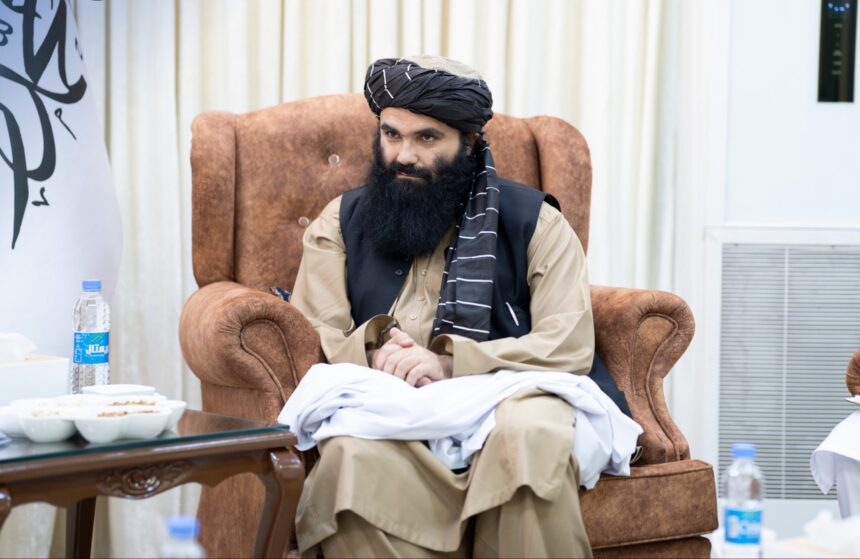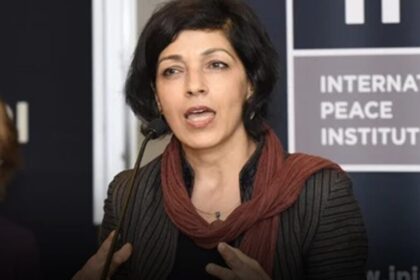RASC News Agency: While Taliban leaders gathered in Kabul and Kandahar to lead Eid al-Adha prayers and deliver public messages aimed at projecting unity and control, the conspicuous absence of Sirajuddin Haqqani Interior Minister and one of the most influential figures in the group did not go unnoticed. Haqqani neither appeared at any public gathering nor issued a customary Eid message, raising fresh questions about his role and visibility within the fractured Taliban hierarchy. Traditionally, senior Taliban officials mark the occasion of Eid by delivering sermons, issuing congratulatory messages, and presenting a united front to both domestic and international audiences. However, the silence of Sirajuddin Haqqani widely considered the most powerful figure in the Taliban after the elusive supreme leader, Hibatullah Akhundzada has triggered speculation about the deepening internal divisions within the regime’s leadership structure.
Haqqani, once a prominent and media-visible figure known for his speeches at key Taliban gatherings, has in recent months receded into the background. During the Eid al-Adha festivities, no footage, photographs, or statements bearing his name emerged. The only mention of the Ministry of Interior came in a routine security report dated June 5, which notably omitted any reference to Haqqani’s involvement or leadership. Just two months prior, in his Eid al-Fitr message, Haqqani had publicly advised fellow Taliban officials to adopt humility in their governance and to support the public through adherence to Islamic principles. In that same speech, he lauded Hibatullah Akhundzada as a capable leader. Yet his disappearance from the Eid al-Adha events, combined with the increasing opacity surrounding his role, suggests that internal fault lines within the Taliban leadership remain unresolved.
Meanwhile, Hibatullah Akhundzada who rarely appears in public and governs primarily from behind closed doors in Kandahar delivered a rare one-hour sermon at Eid Gah Mosque in Kandahar. He addressed topics such as support for Palestine, the Taliban’s stance on women, and the status of opposition groups. His appearance, while intended to signal authority, also served to underscore the deep centralization of power in a regime that refuses to operate with transparency or inclusivity. In Kabul, Taliban officials including acting Prime Minister Mullah Mohammad Hassan, his deputies Mullah Baradar and Abdul Salam Hanafi, as well as the regime’s chief justice, gathered publicly for Eid prayers. During the event, Mullah Hassan took the opportunity to denounce U.S. sanctions an increasingly frequent deflection used by Taliban leaders to shift focus from the group’s economic mismanagement and mounting internal crises.
Elsewhere, Taliban Minister for Refugees, Mawlawi Abdul Kabir, conducted Eid prayers independently at the historic Sepidar Palace an unusual setting for someone of his portfolio. Despite being formally assigned to oversee refugee affairs, Abdul Kabir continues to reside in the palace, a symbolic reminder of the regime’s entrenched system of favoritism and opaque power arrangements. Observers and Kabul residents alike suspect that tensions between Sirajuddin Haqqani’s circle and that of Akhundzada continue to simmer beneath the surface. Several months ago, Haqqani reportedly left Afghanistan temporarily amid mounting disagreements, only to return to his ministry after the intervention of other Taliban figures. Notably, Sher Mohammad Abbas Stanekzai, the Taliban’s deputy foreign minister and a close Haqqani ally, has been absent from Kabul and is believed to have remained abroad for similar reasons.
Despite the Taliban’s performative speeches about “unity and Islamic brotherhood” during Eid, the regime’s internal fragmentation is becoming increasingly difficult to conceal. The leadership’s repeated insistence on discipline and cohesion, echoed again in Akhundzada’s speech, appears more as a plea than a reflection of reality. Beneath the surface of choreographed sermons and carefully framed photographs lies a fractured regime gripped by infighting, mistrust, and divergent agendas. As the group seeks international legitimacy, its internal volatility casts further doubt on its ability to govern sustainably or represent the diverse populations of Afghanistan. The absence of Haqqani once touted as a bridge between hardliners and pragmatists only reinforces perceptions of instability at the core of Taliban rule.
In a country battered by humanitarian collapse, economic stagnation, and systemic repression, the Taliban’s hollow displays of unity are increasingly viewed by the public as theatre an attempt to paper over the cracks of a regime that is struggling to hold itself together.






